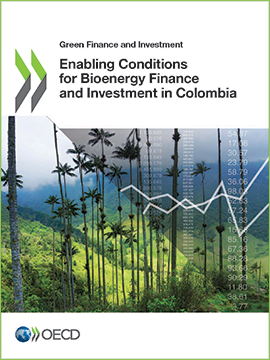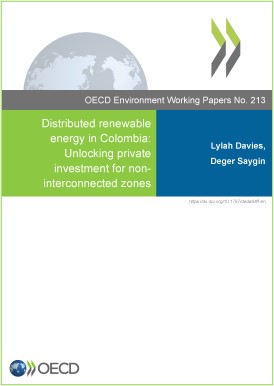Colombia
Our work in Colombia
The Clean Energy Finance and Investment Mobilisation (CEFIM) programme builds upon the OECD’s strong engagement with Colombia and supports the country in unlocking finance and investment flows to achieve clean energy targets and sustainable finance goals. The programme draws on extensive stakeholder engagement and will provide tailored recommendations through implementation-support activities and investor dialogues. This will be complemented by regional peer-learning activities.
News and events
- Distributed renewable energy in Colombia: Unlocking private investment for non-interconnected zones | 17 May 2023, OECD (en espagñol)
- Finance and investment mobilisation for bioenergy projects in LAC: regional peer-learning event | 12 December 2022
- Blog: Enabling conditions for bioenergy finance and investment in Colombia | 27 April 2022
- Enabling conditions for bioenergy finance | 24 March 2022, OECD (en espagñol)
- Colombia becomes the newest member country | 28 April 2020, OECD
Enabling conditions for bioenergy finance
Colombia has set forth a number of important policy strategies to achieve its clean energy ambitions, including the 2018 Green Growth Policy, the 2019 National Circular Economy Strategy and the 2022 Energy Transition Policy. These strategies all note the role sustainable bioenergy and waste-to-energy can play in supporting decarbonisation objectives. This report looks at the enabling conditions to encourage development of these clean energy solutions and mobilise the necessary finance and investment. Through five case studies from Brazil, Chile, Colombia, India and Turkey, the report also considers the enabling environment and lessons learnt from bioenergy developments in different countries.

Distributed renewable energy in Colombia
Colombia has prioritised the use of renewable energy to expand and improve electricity services for its population in zones non-interconnected to the national grid. Recent policies and regulations have supported this ambition with successive measures to strengthen investment conditions for distributed renewable energy, like standalone solar photovoltaic (PV) solutions and hybrid solar PV mini-grids. Still, the distributed renewable energy market in non-interconnected zones is relatively immature, reflected by the high costs for connecting new users. New business and financing models will be critical to bringing down the cost of renewable energy technologies, accessing private equity and debt in larger volumes, and ultimately progressing towards replacing existing inefficient and polluting diesel generation systems. Building on international experiences, this paper discusses approaches to strengthening investment conditions, looking at support mechanisms and de-risking instruments used elsewhere, which can help bridge the financing gap in Colombia.

Country overview
Market trends and outlooks
Energy market governance
Policy highlights
Sustainable finance
Financing instruments
Additional resources
- ProColombia - investment opportunities in renewable energy
- UMPE project registry - registration of power generation projects
- CONPES - national strategies under the National Council for Social and Economic Policy
- Mining and Energy statistics
